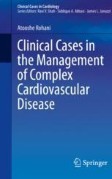Search
Search Results
-
Myotonic Dystrophy (DM)
Myotonic dystrophy, comprising type 1 (DM1) and type 2 (DM2), is the most common form of muscular dystrophy, characterized by multisystemic...
-
Myotonic Dystrophy Type 2 and Cardiomyopathy
A 55-year-old male known for myotonic dystrophy type II (DM2) in the background history of hypertension and diabetes presented with exertional...
-
Myotonic Dystrophy
The myotonic disorders encompass a range of genetic conditions unified by the presence of myotonia, a failure of muscle relaxation after activation....
-
Greater cortical thinning and microstructural integrity loss in myotonic dystrophy type 1 compared to myotonic dystrophy type 2
BackgroundMyotonic dystrophy is a multisystem disorder characterized by widespread organic involvement including central nervous system symptoms....

-
Afterdischarges in myotonic dystrophy type 1
ObjectiveElectrodiagnostic testing is an important screening test for myotonic dystrophy type 1 (DM1). Although myotonic discharges are observed on...

-
Multi-level profiling unravels mitochondrial dysfunction in myotonic dystrophy type 2
Myotonic dystrophy type 2 (DM2) is an autosomal-dominant multisystemic disease with a core manifestation of proximal muscle weakness, muscle atrophy,...

-
Myotonic Dystrophy
A 31-year-old gentleman presented with gait imbalance since childhood. He was unable to run in school sports and playground and used to fall...
-
Chronic endoplasmic reticulum stress in myotonic dystrophy type 2 promotes autoimmunity via mitochondrial DNA release
Myotonic dystrophy type 2 (DM2) is a tetranucleotide CCTG repeat expansion disease associated with an increased prevalence of autoimmunity. Here, we...

-
Unexpected diagnosis of myotonic dystrophy type 2 repeat expansion by genome sequencing
Several neurological disorders, such as myotonic dystrophy are caused by expansions of short tandem repeats (STRs) which can be difficult to detect...

-
Sleep Disorders and Fatigue in Patients with Different Forms of Myotonic Dystrophy Type 1
Objectives . To characterize sleep disorders in children and adults with different forms of myotonic dystrophy type 1 (DM1) and to evaluate their...
-
Myotonic dystrophy type 1 in the COVID-19 era
IntroductionMyotonic dystrophy type 1 (DM1) is the most prevalent muscular dystrophy in adults. People with DM1 might represent a high-risk...

-
Update on Therapy for Myotonic Dystrophy Type 1
Purpose of reviewThis review aimed to summarize the clinical characteristics of myotonic dystrophy type 1 and to provide a comprehensive review of...
-
Clinical score for early diagnosis of myotonic dystrophy type 2
IntroductionMyotonic dystrophy type 2 (DM2) is a rare, multisystemic, autosomal dominant disease with highly variable clinical presentation. DM2 is...

-
Heterogeneity of cognitive impairments in myotonic dystrophy type 1 explained by three distinct cognitive profiles
BackgroundSeverity and nature of cognitive impairments in Myotonic dystrophy type 1 (DM1) are heterogeneous among studies. We hypothesized that this...

-
Clinical features and genetic spectrum of a multicenter Chinese cohort with myotonic dystrophy type 1
BackgroundAs the most common subtype of adult muscular dystrophy worldwide, large cohort reports on myotonic dystrophy type I (DM1) in China are...

-
Myotonic Dystrophies
Myotonic dystrophies (DM) are the most common muscular dystrophies in adults. They include myotonic dystrophy type 1 (DM1) or Steinert’s disease, and...
-
Current Treatment Options for Patients with Myotonic Dystrophy Type 2
Purpose of the reviewMyotonic dystrophy types 1 and 2 are frequent forms of muscular dystrophies in adulthood. Their clinical differences need to be...

-
CaMKIIβ deregulation contributes to neuromuscular junction destabilization in Myotonic Dystrophy type I
BackgroundMyotonic Dystrophy type I (DM1) is the most common muscular dystrophy in adults. Previous reports have highlighted that neuromuscular...

-
Ocular findings in a Spanish cohort of myotonic dystrophy type 1
PurposeMyotonic dystrophy type 1 is the most common muscular dystrophy in adulthood, caused by a triplet repeat in chromosome 19q13.3. The present...

-
Myotonic dystrophy type 1 in South Korea: a comprehensive analysis of cancer and comorbidity risks
Background and purposeMyotonic dystrophy type 1 (DM1) is an inherited neuromuscular disorder characterized by myotonia and progressive muscle...
